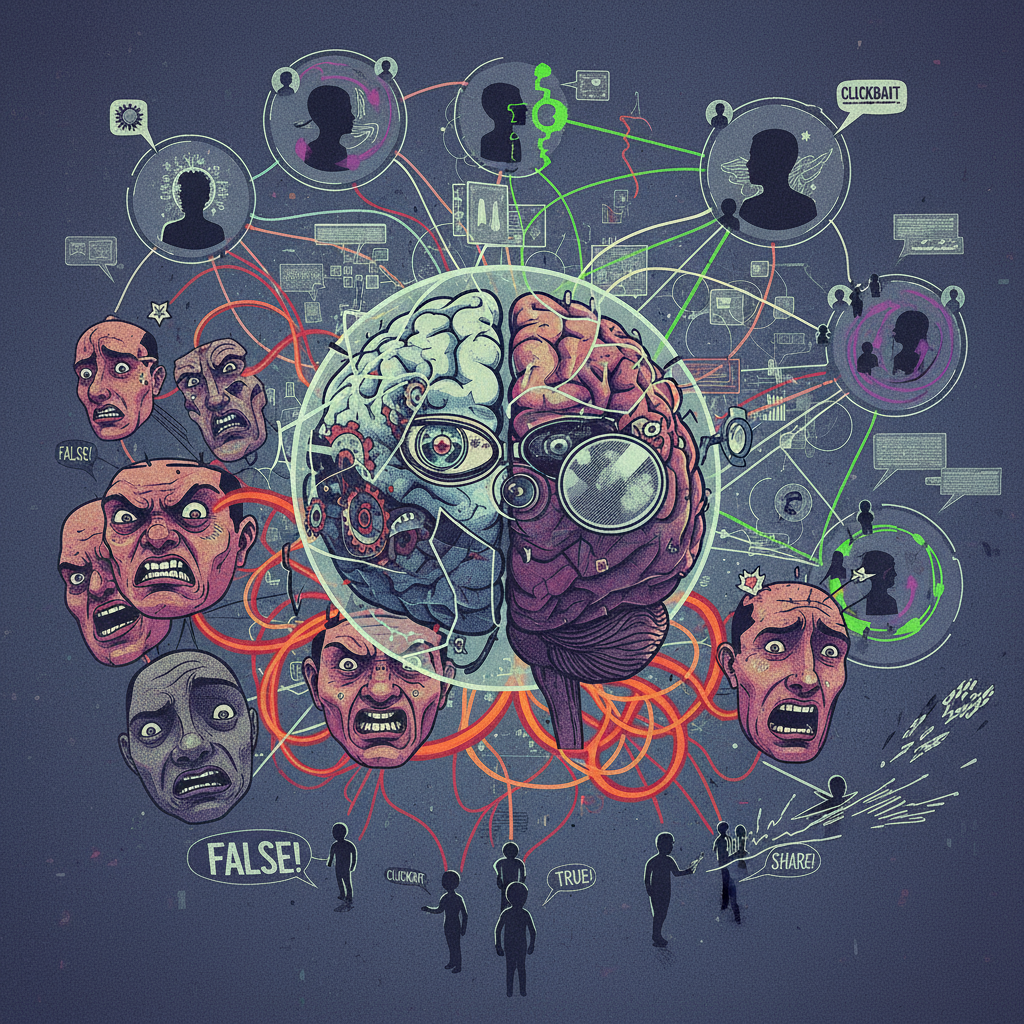
In the age of information overload, distinguishing fact from fiction has become an increasingly complex challenge. The proliferation of “fake news”—misleading or entirely false information presented as legitimate news poses a significant threat to informed public discourse, democratic processes, and even individual well-being. While the spread of fake news is often attributed to malicious actors or algorithmic biases, a deeper understanding requires examining the psychological factors that make us susceptible to believing and sharing it. This article delves into the cognitive biases, emotional triggers, and social dynamics that explain why we fall for fake news, offering insights into how to build greater resilience against its influence.
Cognitive Biases: The Mind’s Shortcuts
Our brains are wired to process information efficiently, often relying on mental shortcuts known as cognitive biases. While generally helpful, these biases can make us vulnerable to fake news:
- Confirmation Bias: This is perhaps the most significant factor. We tend to seek out, interpret, and remember information in a way that confirms our existing beliefs and values. Fake news that aligns with our worldview is more likely to be accepted without critical scrutiny, as it reinforces what we already think we know. This creates an echo chamber effect, where dissenting information is dismissed or ignored.
- Availability Heuristic: We tend to overestimate the likelihood of events that are easily recalled or vivid in our minds. Fake news, often designed to be sensational and emotionally charged, can be highly memorable. Repeated exposure to such narratives, even if false, can make them seem more plausible simply because they are readily available in our memory.
- Anchoring Bias: This bias describes our tendency to rely too heavily on the first piece of information offered (the “anchor”) when making decisions. Fake news can set an initial anchor, framing a narrative that then influences how subsequent information is interpreted, even if that information contradicts the initial false claim.
- Illusory Truth Effect: Simply put, repeated statements are perceived as more truthful than new ones. Even if we initially doubt a piece of fake news, repeated exposure to it, especially across different platforms or from various sources, can increase its perceived veracity over time. This is a powerful mechanism exploited by disinformation campaigns.
Emotional Triggers: Exploiting Our Feelings
Fake news often bypasses rational thought by directly appealing to our emotions. Content designed to evoke strong feelings—such as anger, fear, outrage, or even excitement—is more likely to be shared rapidly and uncritically:
- Fear and Anger: These emotions are particularly potent. Fake news often plays on existing anxieties or grievances, creating narratives that demonize out-groups or exaggerate threats. When we are fearful or angry, our critical thinking skills can be diminished, making us more prone to accepting information that validates these feelings and offers a clear (even if false) explanation or target for our emotions.
- Moral Outrage: Content that triggers moral outrage can be highly contagious. Fake news stories often frame events in terms of clear good versus evil, or highlight perceived injustices, prompting individuals to share them as a form of moral signaling or to express solidarity with a cause.
- Sense of Belonging: Sharing fake news can also be driven by a desire for social connection and belonging. In online communities, sharing content that aligns with the group’s beliefs can reinforce social bonds and signal allegiance, even if the content is dubious.
Social Dynamics: The Role of Our Networks
Our social networks, both online and offline, play a crucial role in the spread and acceptance of fake news:
- Trust in Social Circles: We are more likely to believe information shared by friends, family, or trusted influencers, regardless of its factual accuracy. This social trust can override critical evaluation, as we assume that those we know and respect would not intentionally share false information.
- Echo Chambers and Filter Bubbles: Social media algorithms and our own choices often create echo chambers, where we are primarily exposed to information and opinions that reinforce our existing views. This limits exposure to diverse perspectives and makes it harder to encounter information that might challenge or debunk fake news.
- Social Validation: The number of likes, shares, or comments a piece of content receives can be interpreted as a sign of its credibility or importance. This social validation can encourage further sharing, creating a viral loop even for false information.
Building Resilience: How to Combat Fake News
While the psychological mechanisms behind falling for fake news are powerful, individuals can develop strategies to build resilience:
- Practice Critical Thinking: Before sharing, question the source, look for corroborating evidence, and consider potential biases. Don’t just read the headline; read the entire article.
- Check Your Emotions: Be aware of how strong emotions might influence your judgment. If a piece of news makes you feel intensely angry or fearful, pause and verify its authenticity before reacting.
- Diversify Your Information Sources: Actively seek out news from a variety of reputable and ideologically diverse sources to broaden your perspective and challenge your own biases.
- Fact-Checking: Utilize independent fact-checking websites and organizations to verify dubious claims.
- Understand How Algorithms Work: Be aware that social media algorithms are designed to show you content you’re likely to engage with, which can reinforce existing beliefs. Actively seek out different viewpoints.
Falling for fake news is not a sign of intellectual weakness but rather a testament to the powerful psychological forces at play in how we process information and interact within our social networks. By understanding the cognitive biases, emotional triggers, and social dynamics that make us vulnerable, we can become more discerning consumers of information. Building resilience against fake news is a collective responsibility, requiring both individual vigilance and broader efforts to promote media literacy and critical thinking in an increasingly complex information landscape. Only then can we hope to foster a more informed and resilient society.